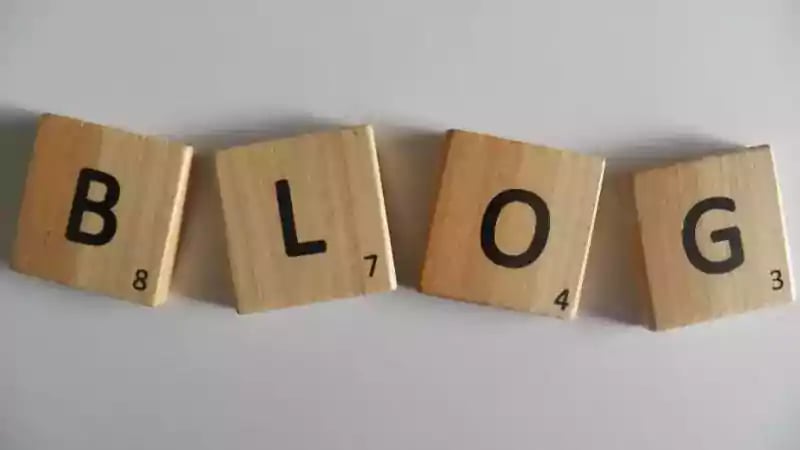Elevate your content with HubSpot Marketing Hub for content marketing. Discover how our strategies and HubSpot's tools drive success.
What Is a Good Blog Headline - And How to Write One! 😉
Headlines are a crucial element of any successful blog post. Headlines are the first your visitors see; they get people to click on your content and can make or break your success, the difference between a great blog and a mediocre one. It's estimated that, on average, 8 out of 10 people will only read your headline. The other two will scroll through and read the article. It seems insane, right?
That's why we're here to discuss what makes a powerful title and give tips on writing catchy headlines that will motivate people to read your blog.

Why Do Blog Headlines Matter?
-
The best blog headlines are 60 characters or less and get 65% more clicks than headlines longer than 60 characters. Short and sweet is the way to go when it comes to headlines. People are more likely to remember catchy blog headlines and click on concise blog post headlines that are to the point, especially when scanning through search results.
-
Headlines that use numbers get 26% more clicks than headlines that don't use numbers. The best headlines provide precise details and grab people's attention. Including numbers in the headline can make it more informative and captivating for the readers.
-
Headlines that use strong verbs get 38% more clicks than headlines that don't use strong verbs. Utilizing strong verbs within headlines can ignite a sense of urgency and exhilaration, ultimately increasing the likelihood of a click. They can enhance the persuasiveness and attention-grabbing nature of a headline.
-
Headlines that use negative words get 20% fewer clicks than headlines that don't use negative words. Headlines with positive and inspiring language appeal more to readers, while negative words can deter them from clicking. It's essential to choose a language that uplifts and motivates your audience.
-
Headlines that are relevant to the search query get 35% more clicks than headlines that are not relevant. Great headlines are pertinent to the search query and are more likely to catch the attention of potential readers. When individuals search for something online, they tend to click on headlines related to their search query. Therefore, ensuring that your headline is relevant to the topic is crucial.
Solve Their Problem
Most people, 90% or more of internet searchers, use Google to help solve a problem. Maybe their kitchen sink tap is dripping, or they have a gap in their production line at the factory, or perhaps they've recently been directed to start a content marketing initiative for the company (you never know what folks are searching for, do you?).
Whatever the pain point, they're looking for a solution. Show them how you can provide it. You do write your blog post for a specific buyer persona, right? Your blog post needs to solve the specific issue your buyer persona is looking to solve.
Some examples of headline starters that appeal to one of the many possible problem scenarios you may encounter:
-
Need it fixed NOW: "Fast ways to…."
-
Need it fixed RIGHT: "The best ways to…."
-
Need to be fixed CHEAP: "The easiest/cheapest way to…that you can do yourself!"
-
Need to know, "How would YOU fix this?": “In your situation, I would…."
-
Need to know how a Scientist would fix it: "Try this; it's backed by science…."
A blog headline responding to a buyer persona's core problem increases open rates and engagement.
Be Respectful
Respect is the name of the game when it comes to writing headlines. Your potential audience has things to do and problems to solve, and they don't need to waste time clicking on a catchy blog title only to find a puff piece with a bunch of affiliate links and no factual information.
Make sure your headline accurately portrays the information that follows in the article. The headline is a promise; you want to ensure your content delivers. As a best practice, we suggest not picking a blog post title until you write a blog post. Use a working title you created while brainstorming (hang on, we're getting to that) as your starter. Then, once you have the content drafted out, you'll have a better idea of which direction makes the most sense for the title.
You may find that none of your working titles is suitable, and that's cool. Working this way allows you to write a new one that works better.
Brainstorm, and Do Your Research
Brainstorming can be done when you feel stuck in the creative process. Initially, developing bucketloads of working titles is great, especially if you have someone to bounce them off of. That outside perspective can be invaluable in helping you see your subject in a new way.
When you send a draft to someone for editing, send a short list of possible titles to get their opinion. Reading your draft will be their first introduction to the subject and the title options, so they'll have fresh eyes to offer input.
And finally, when you're done with the piece and it's time to select the winning title, getting the opinion of someone who HASN'T been staring at the material for hours can bring even more great insight.
On the research front, start with N=1. That means you're the subject whose opinion is being sought. What headlines do you like? What opening words or phrases get you to click through? Do you like "Best of" posts, or do you prefer lists? Despite what you may have heard growing up, you're not that different from others in your age group, so chances are if you like it, so will they.
While you're at it, check in with your competition. Yep, that's right, the competition. Look at their content and see what's working for them. See how they craft their headlines and whether or not they draw you in. Then, deconstruct what they did and see if you can use a similar format for the piece you're working on. Choosing the right keywords is also crucial. This will help readers find your content and boost search engine rankings.
Tips and Tricks
-
Don't be cutesy. Headlines need to be catchy; however, if they're just twee, they won't give you the punch or the SEO juice you want.
-
Keep it brief. Anything beyond 70 characters will likely be cut off in search results. What's the right length? I'm glad you asked--this is where A/B testing is your best friend.
-
Use brackets. Set off a feature of your headline; when people see [new study] or (interview) or even *cough*cough* (and how to write one) at the end of a headline, not only is their interest piqued, but now they know in advance that they have some good stuff waiting. This clarification has led to better click-through rates, up to 38% better.
-
Write properly. There's no second opportunity to leave a first impression. Ensure proper spelling and know which words to capitalize in a headline.
-
Iterate. We touched on this earlier, but repeating ourselves with something this important can't hurt. Create a dozen (or two dozen, or a handful, the point is more than a couple) working titles for your piece, then start writing it. After the piece is done, leave the final decision, and you see which direction you took it in.
You Might Also Like This Post:
Types of Blog Headlines
-
"The Best:" Zero in on a pain point you know your audience deals with, then give them a straightforward way to solve it. Suppose that happens to involve your product or service, bonus. And if not, don't worry; content marketing aims to show authority in your industry and engender trust in your audience. The key to this headline style is to draw readers in and give them the information they can use. That boosts trust in your brand and keeps them returning for more.
-
Questions: People like answering questions, even rhetorical ones. Engage your audience with thought-provoking queries that align with their interests. For example, "Can you imagine life without this essential tool?" or "What if you could double your productivity with one simple trick?"
-
Numbers: "7 ways to…" "4 of the best…" “Top 10 ideas for…" Numbers attract the eye and can make a headline seem more skimmable, increasing the likelihood of attracting readers. Create attention-grabbing headlines like "10 Secrets to Unlock Your Full Potential" or "5 Life-Changing Habits for Success."
-
Lists: Even if they aren't numbered, lists appeal to the human sense of order. People like numbers and love short entry lists that give them ideas to work with. Find a craft or hobby you know your audience is into, then give them a post listing the 11 best places to do it or the 9 top social media accounts they should follow. This headline style shows your human side and makes your content more relatable when they start scrolling to read more.
-
Personal Anecdote: If your content piece is about how you learned to do what you do, your headline should say just that clearly and straightforwardly. "How we learned to code." "How I figured out what to do with my life.” And so on. This is another way to show your human side and make your audience feel they already know you before reading the story. This style also shows that people trust people, so saying that you did this thing this way will endear you to your readers and make them trust you even more.
-
Personal Afront: This is a tricky one, also known as "throwing shade" headlines. When used correctly, it can do wonders for your authority on the subject you're writing on. However, if done poorly, it can just turn your audience against you. Styled like "Doing this makes you look like an amateur" or "The mistake you're making that's costing you clients," this style is an immediate attention grabber. After all, nobody wants to look like an amateur, right?
-
The DIY: This is your standard "How To" guide headline. When your content is a straightforward tutorial or quick start guide, this is the way to go with your headline. It's clear from the start what you're offering; there's no way not to know a tutorial is coming up when the headline says “How to Install Your New Widget."
-
The Ultimate Guide: This is your go-to headline when you've combined your evergreen How To guides into an all-encompassing guide to…(enter your subject here). Be sure to use definitive, ultimate, complete, and guide words.
-
The Confidant: "You're doing great, except for this one thing." This headline will catch readers' attention for reasons similar to "throwing shade." Nobody wants to be called out for doing something wrong. And for similar reasons, this is a touchy style; we wouldn't recommend using either too often to avoid alienating your readers. That way, when you do, it will grab eyeballs and draw readers in to see what could make you so strident.
-
The Emotional Contagion: Words are powerful. Using these or similar words in your headline strikes an emotional chord that people find extremely hard to resist. They'll click or scroll through to find out what triggered such strong emotion in you. Use words like awe, fear, lust, anger, angst, or joy.
-
The Psychololical Trigger: Remember Maslow? Speak to your audience's need for self-esteem and standing in their community or office, and watch the read rate skyrocket. Assuming your audience has their basic needs met (food, shelter, etc.), it's safe to say they're ready for a self-esteem boost to help bring them one step closer to self-actualization. And if you can trigger that in your headline, you've got them.
-
Clickbait: Don't. Just don't. No matter how strong the desire is to get people to click through to your content, do not use clickbait-y headlines. If a person sees a sensational headline and clicks through, then they find a standard, boilerplate piece of content instead; they're never coming back.
And Finally, Remember That Respect Thing?
It comes into play again when we say you must craft your piece for your audience first and foremost. You may have noticed we didn't even mention SEO once. Oops. Oh well, the point stands: you are creating your content for your audience first, then for SEO. By respecting your reader's time and energy, they will understand and appreciate your intent, and it will endear you to them.
When you use keywords based on searches your audience is doing, that will help your SEO.
When you put those keywords at the beginning of your title, your readers will notice, and Google will, too.
And when you write fascinating, engaging content that draws new readers in, search engines will most assuredly notice.
AI Prompt
Generating relevant and impactful blog titles is a great use case for AI. AI will likely not create the perfect, copy-paste-ready blog title. However, if you opt for generating more than one suggestion, you'll probably get some good inspirations and will be on a good way with the following prompt:
-
"You are my SEO Expert. Give me three title suggestions, no more than 70 characters each, SEO-optimized for the keyword <Keyword> for the following web page: <InsertURL>."
-
"You are my SEO Expert. I am a <describe your business> targeting <buyer persona>. Give me three title suggestions to sell my <Services>, no more than 155 characters each, SEO-optimized for the keyword <Keyword> for the following web page: <InsertURL>."
This content is also available in:
- German: Was ist eine gute Blog-Überschrift - und wie man sie schreibt 😉
- Spanish: Qué es un buen titular de blog - ¡Y cómo escribirlo! 😉
- French: Qu'est-ce qu'un bon titre de blog - et comment en écrire un ! 😉
- Italian: Cos'è un buon titolo di un blog - e come scriverlo! 😉
- Romanian: Ce este un titlu de blog bun - și cum să scrieți unul! 😉
- Chinese: 什么是好的博客标题--以及如何撰写! 😉










Leave a Comment